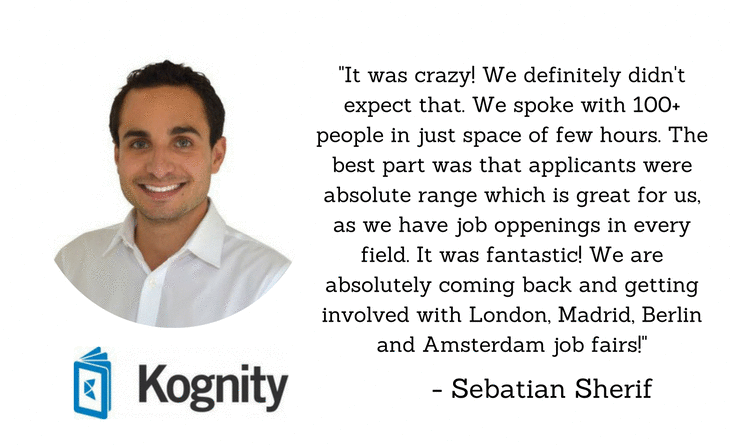In the era of digital transformation and remote work, effective collaboration is more critical than ever. Maintaining productivity, creativity, and team morale can feel challenging when team members are spread across multiple time zones. Fortunately, modern technology has gifted us with a multitude of collaborative software designed to bridge this gap and ensure that teamwork flows seamlessly, irrespective of geographical boundaries. Technology career opportunities abound in this evolving landscape, offering diverse paths for those seeking to excel in this field.
In this blog post, we will delve into the world of remote collaboration by exploring some of the best collaboration software tailored for remote teams. From project management titans like Trello and Basecamp to innovative platforms like Monday.com, Airtable, and email marketing guru Mailchimp, we’ve got you covered.
So buckle up and let’s sail into the realm of remote collaboration tools!
1. Slack
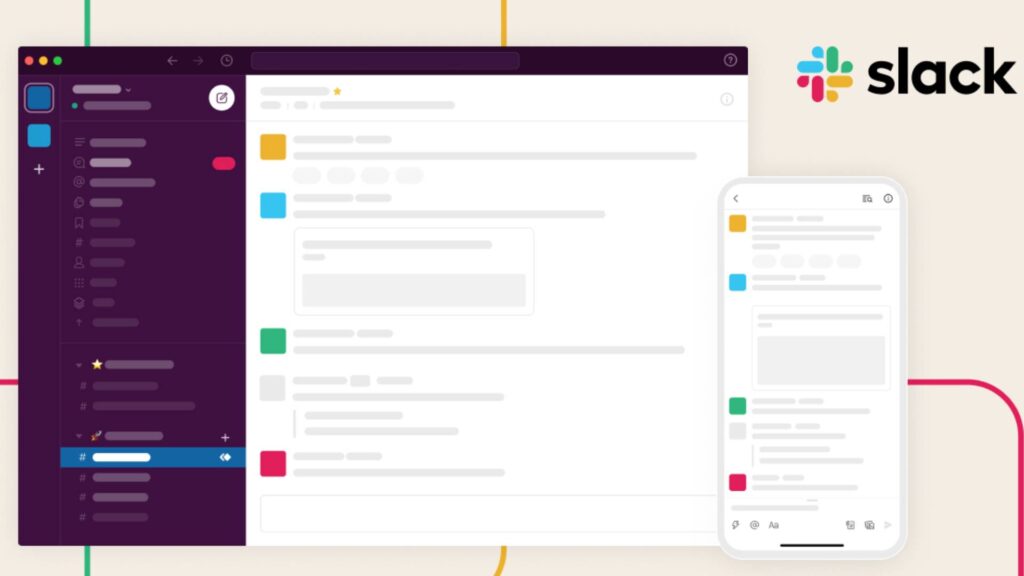
A powerful collaboration tool that supports real-time messaging, file sharing, and integrations with tools like Google Drive and Trello. It features channels to organize discussions and supports direct messaging.
Pros: Real-time messaging leads to faster communication and decision-making. The ability to integrate with a variety of other tools (like Google Drive, Trello, etc.) makes it easier for teams to work together. The interface is user friendly and simplistic.
Cons: The basic free version has limited features, which may not be sufficient for larger teams or complex projects. It can become overwhelming to manage all the different channels and messages if not set up properly. Slack is also text-heavy, which can be a downside for visual-oriented workers.
Website: https://slack.com/
2. Microsoft Teams
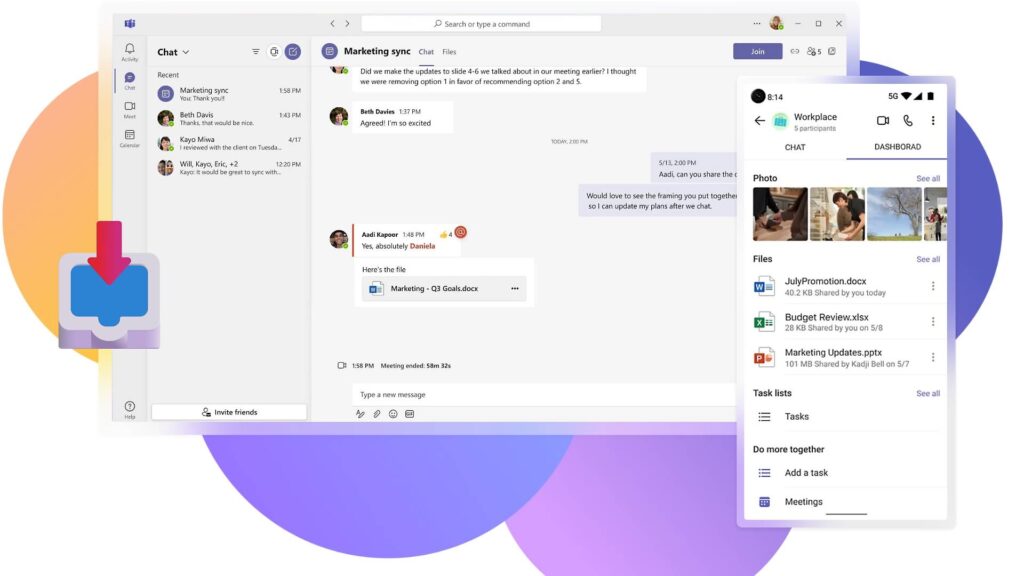
Part of the Microsoft 365 suite, it is a hub for teamwork. It allows for chats, meetings, calls, and collaboration in a single place.
Pros: It’s integrated into Microsoft 365 suite, so teams using Office apps can seamlessly connect and collaborate. Allows for chat, meetings, calls, and collaboration all in one platform.
Cons: The user interface can be confusing and cluttered. It often requires a learning curve to effectively navigate it. In case a business isn’t subscribed to Microsoft 365, then the potential of Teams gets significantly limited.
Website: https://www.microsoft.com/en/microsoft-teams/group-chat-software
3. Zoom

Offers a high-quality video conferencing experience with features like screen sharing, virtual backgrounds, and chat rooms for meetings.
Pros: Offers a reliable and high-quality video and audio conference experience. Features like screen sharing, virtual backgrounds, and breakout rooms help facilitate different kinds of meetings.
Cons: There have been some security and privacy concerns with Zoom (Zoombombing). The free version restricts group meetings to 40 minutes.
Website: https://zoom.us/
4. Google Workspace
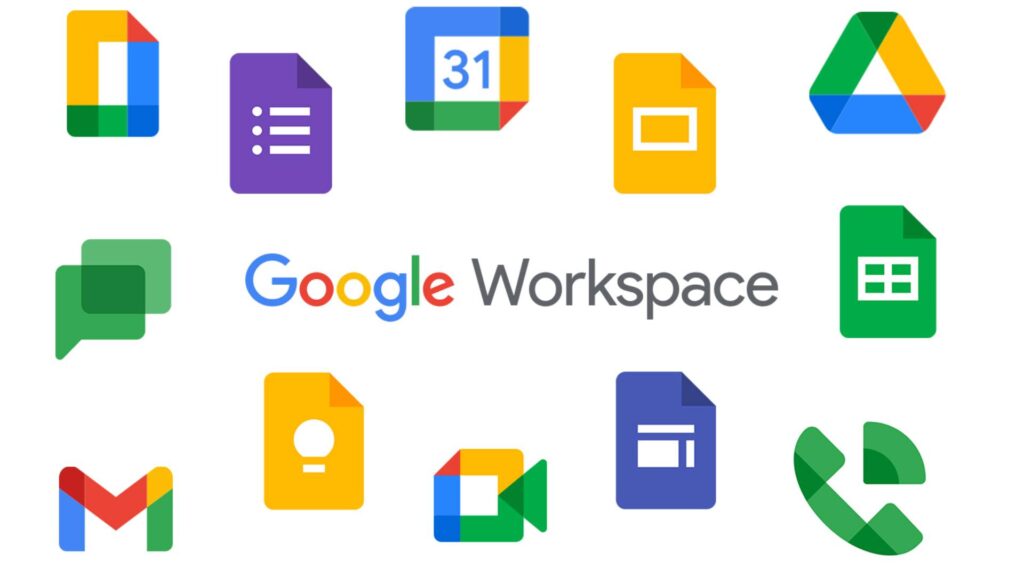
Formerly G Suite, Google Workspace provides an array of Google tools and apps designed for business, including Gmail, Docs, Calendar, and Drive.
Pros: Facilities real-time collaboration on Google workspace products like Docs, Sheets, and Slides. Allows easy communication with Gmail and Google Chat.
Cons: Privacy can be a concern for sensitive data. Google Workspace lags behind in terms of sophisticated formatting or complex calculations compared to Microsoft Office Suite.
Website: https://workspace.google.com/
5. Asana
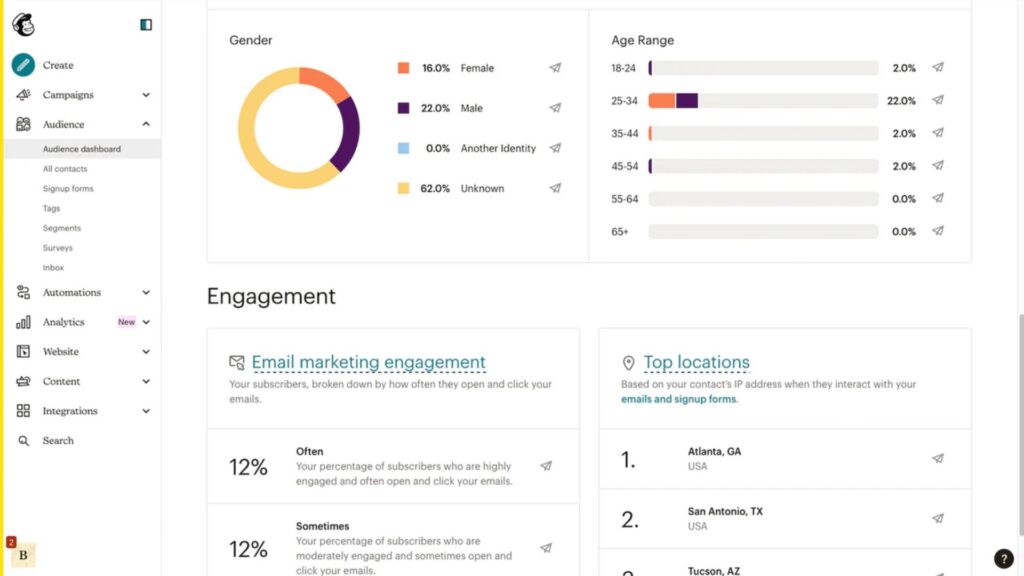
A project management tool designed to help teams organize, plan, and execute their work. It provides timeline views, task assignation, and reports.
Pros: Users can allocate tasks, track progress, and prioritize tasks in a clear visually pleasing platform. It’s an excellent tool for managing team-based work from simple tasks to complex projects.
Cons: Advanced features are primarily available only in the paid versions. It can be too feature-rich for teams that require simple task management only.
Website: https://asana.com/
6. Trello
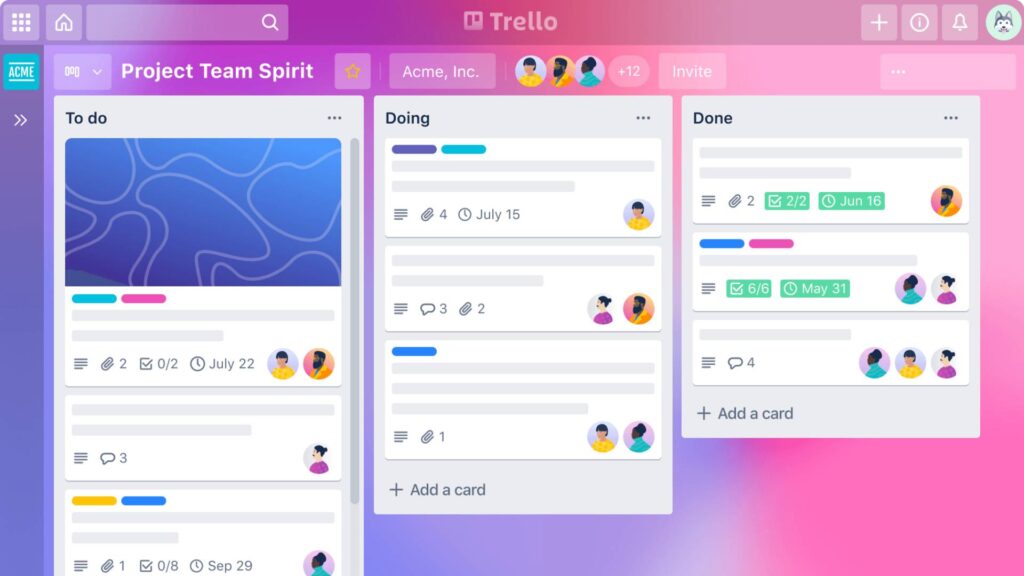
A flexible project management tool that utilizes a board-and-card system for organizational tasks. It’s ideal for collaborating with teams and keeping track of project progress.
Pros: Provides flexible organisation of tasks or projects into boards, lists, and cards. This allows for a visual flow of work, which suits many project management teams.
Cons: The functionality of Trello can be limited. For example, viewing multiple boards at once or deriving insights from tasks is not intuitive in Trello.
Website: https://trello.com/
7. Basecamp
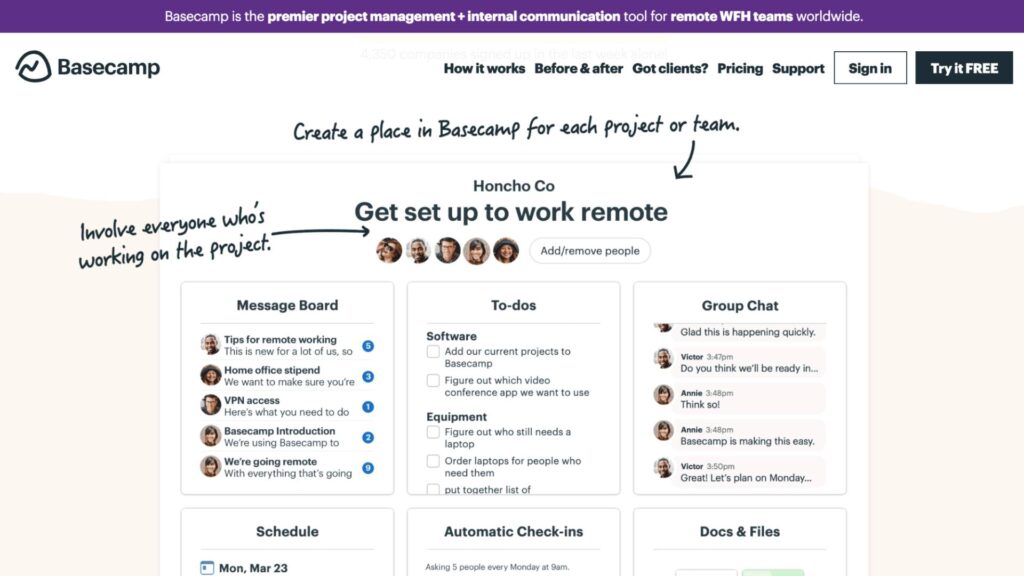
An all-in-one project management and team communication tool that helps teams manage tasks, communicate effectively, and keep track of important documents.
Pros: It’s an all-in-one platform for project management and team communication that helps keep all your project components in one place.
Cons: Sometimes being an all-in-one platform can be a disadvantage as it can limit the functionality of certain features. Large, complex projects may require more robust project management features.
Website: https://basecamp.com/
8. Monday.com
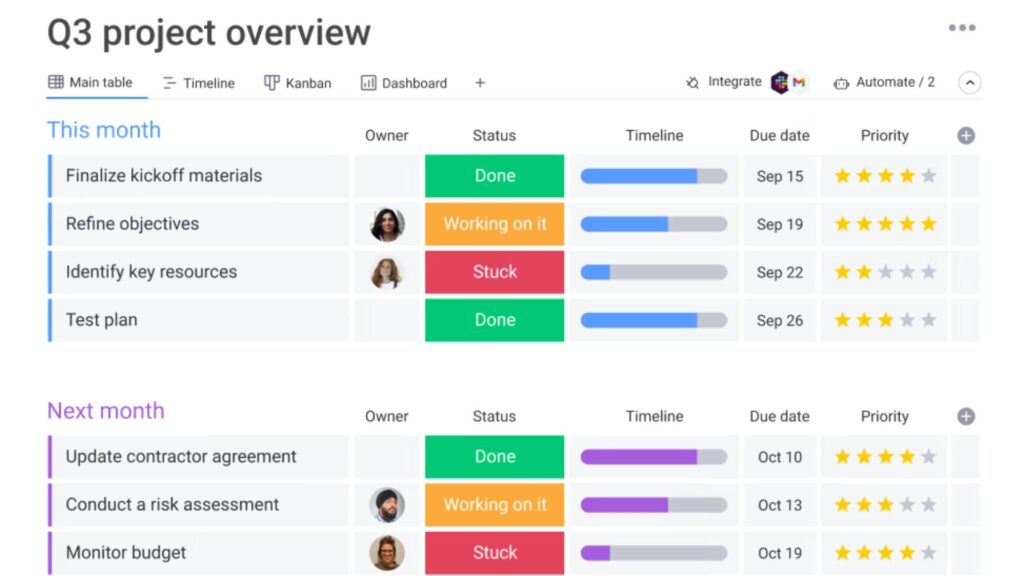
A highly customizable work OS where teams create and shape workflow apps in minutes to plan, run, and track their operations, processes and projects.
Pros: With its color-coding and visually pleasing UI, it’s a great tool for project management, specifically for tracking project progress. It also supports multiple integrations.
Cons: It can be overwhelming and time-consuming initially for teams to adapt to it due to its extensive features. It’s also on the expensive side.
Website: https://monday.com/
9. Airtable
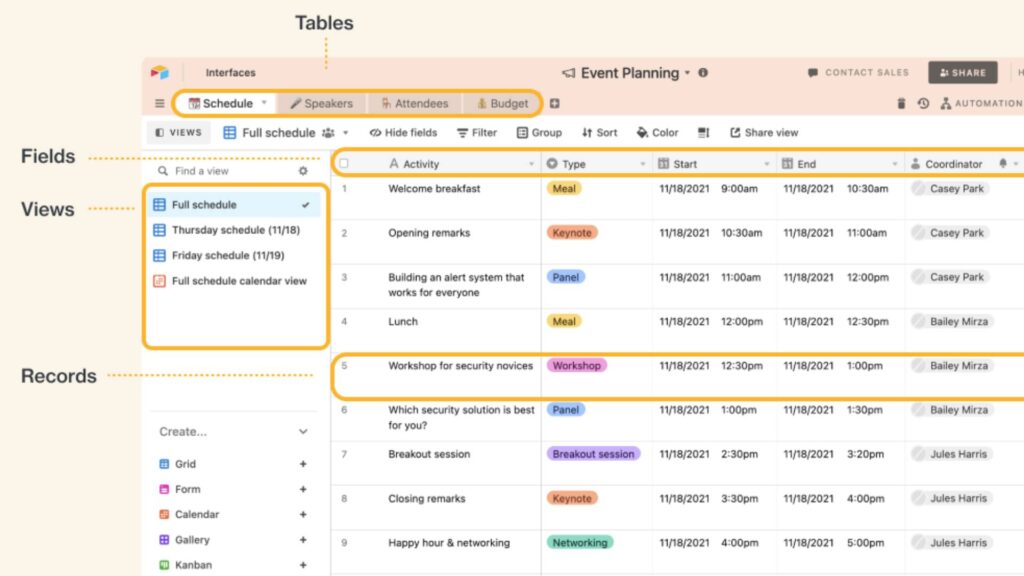
A platform that delivers the flexibility of a spreadsheet with the features of a database. It’s ideal for organizing data, tasks, projects, and more.
Pros: Combines the power of a database with the familiarity of a spreadsheet. Users can link related content and use a variety of templates.
Cons: It’s a powerful platform but requires a steep learning curve. Users also report that customer support isn’t always helpful.
Website: https://airtable.com/
10. Mailchimp

A comprehensive email marketing platform that offers tools for designing, managing, and sending email campaigns. It also provides an analysis of email engagement metrics.
Pros: Combines email marketing, automation, and a CRM tool all in one. Users can create and design emails easily with templates and track performance with robust analytics.
Cons: The expense rises significantly as email lists grow. The design-builder can also be restrictive.
Website: https://mailchimp.com/
Remember, choosing the right tool depends on a host of factors like your team size, budget, needs, required integrations etc. It’s always a good idea to take advantage of free trials to test and see which tools work best for your team.





